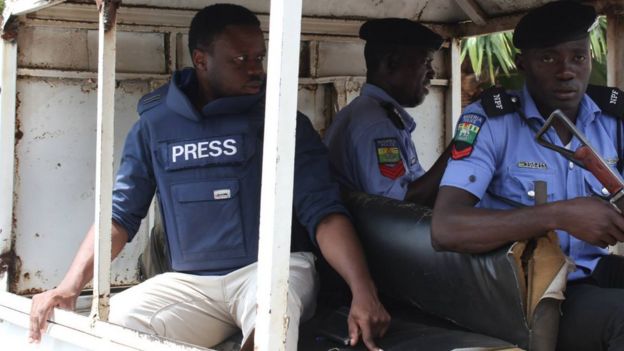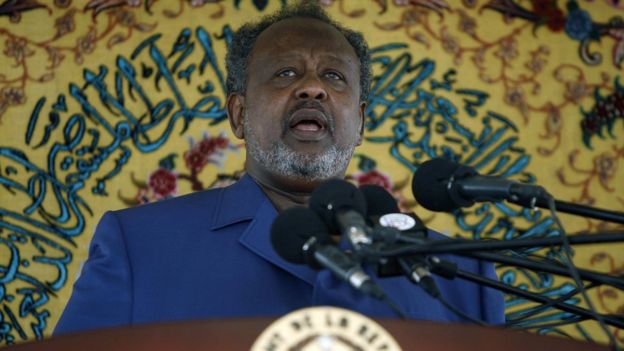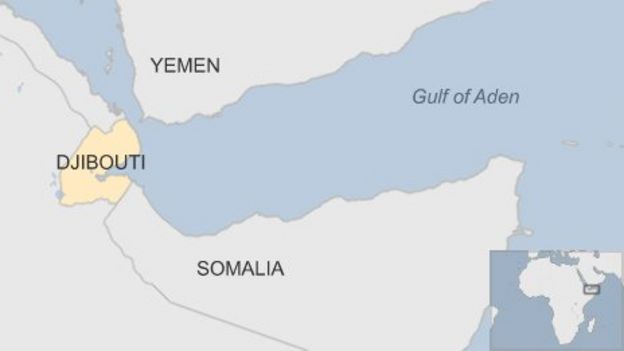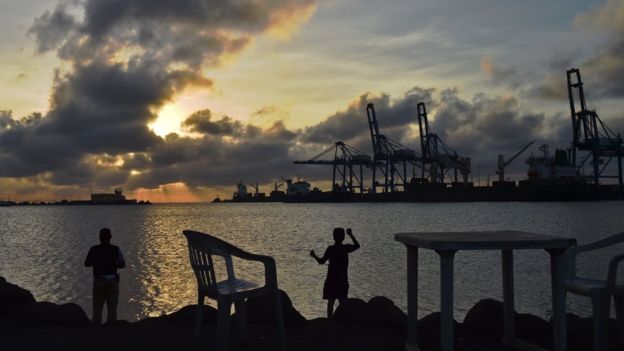2016-04-04
Before proceeding to suggesting solutions I find it important to clarify misunderstandings on the goals and functions of ethnic federalism and decentralization in Ethiopia. First, in the Ethiopian context ethnically based self-rule does not necessarily mean hate to other ethnic groups. In Ethiopia the idea of ethnic based self-rule came as a result of mistrust of central government. I think it is high time now to recognize the limits of the central government in economic development and changing the material conditions of the Ethiopian people. Whatever name given to itself, centralist, unionist, federalist, majority, etc. the historical records and economic theory show that the central government is not meant for fostering economic development in the country. The current protest in Oromo, and before that the Tigray popular movement, the session of Eritrea, the massive out migration of the Ethiopian youth, the suffering of our sisters in Arab countries, the nationwide hunger, extreme poverty in urban and rural areas, etc., shows the limited role of the central government in bringing development, peace and stability in Ethiopia. History and practice shows that the central government in Ethiopia cares for itself and its clients. Time and gain it has proved to be an extractive institutions despite changes in ideology and name. In 1991 the EPRDF government declared self-governing principle and conferred ethnic groups with power to be used as mechanism development and wellbeing. But using the ideology of developmental state and GTP (growth and transformation plan), EPRDF centralized power thus slipped back into the same tradition of unitarist or centralist. It seems that whatever mantle it wears, unitarist or federalist, the central Ethiopian state is true to its tradition: very much elitist and extractivist. Irrespective of time and place, in the eyes of the regional and local people, it always cared for itself. The bottom line is that ethnically organized groups do not trust the Ethiopian central government through no fault of their own and this does not mean hatred to other ethnic groups.
Second, the ethnic Federal Government and the ethnic regional states are not one and the same, and one is not the extension of the other. Even if there is a convergence between the Federal Government and the ethnic regional states, since both make up the strategic components of solving ethnic conflicts on a permanent basis, there are fundamental differences in the power, functions and purposes of ethnic federation and ethnic regions. The fundamental purpose of ethnic Federal Government is to achieve unity and understanding among the constituent ethnic groups (for details see my article The Model and Making of Ethnic Federalism: Problems for Consideration). On the other hand, the regional ethno-linguistically defined states are the focal points where one locates primarily the contradiction between competing political and economic interest groups belonging to the same ethnic group (see below).
Third, it is wrong to consider the ethnic based self-rule as if they do not have an economic objectives. Considering the essence of the political ideology of ethnicity, one can systematize and classify eight sets of objectives of ethnic based regional sates. These are i) Ethnic group empowerment, ii) Ethnic group protection, iii) Ethnic group cohesion, iv) Promoting ethnic group identity, v) Empowering civil society, vi) Promoting economic and social welfare of the ethnic group, vii) Capacity development, and viii) Conservation and management of natural resources. These objectives basically refer to the concept of autonomy, public service provisions and sustainable development. (For detailed case study see Tsegaye Tegenu (2006), Evaluation of the Operation and Performance of Ethnic Decentralization System in Ethiopia: A Case Study of the Gurage People, 1992-2000. Addis Ababa University Press).
Proposing Solutions
Consociationalism at Federal Level
There are practical problems in solving the above mentioned conflicts on a permanent basis. One can fix temporary solutions to the problems by devising mechanisms that may contain or arrest negative developments that threaten the unity of the groups. One way is the monopolization of power both at the federal and regional level through the formation of a coalition of parties or a front. Using the centralised structure of the party command, it might be possible to mitigate the conflicts between the actors. But this type of political solution is fragile and it may collapse if and when the coalition splits or as some members of it withdraw from it feeling marginalized. Another method can be the search for or use of a unifying ideological formula such as the Marxist-Leninist ideology which underlines the invariable significance of class struggle rather than cultural demands of ethnic groups. By definition, a worker or a peasant from one ethnic group cannot have a different interest from the other. However, this ideology has no future as it basically sweeps the ethnic issue under the carpet, for which purpose the regions were set up in the first instance. One may as well try to maintain internal unity of the regional states by emphasising some kind of an overarching assimilationist or integrationist supra nationalist identity named, for instance, after the name of the country. But this type of identity is only acceptable to those people particularly coming from mixed marriages, but not to proponents of the ethnic movements.
Ethnic federation is apparently dependent on democratic rules and it requires democracy for its successful accomplishment. It is advocated that consociationalism is the type of democracy (decision making process and mechanism) which fits the kind of constitutional structure of ethnic federation. The consociational approach places greater faith in the assurance of ethnic group rights and a belief in coalescent democracy (decision). According to Lijphart, consociationalism relies on four basic principles: a broad-based or grand coalition executive, minority veto, proportionality in the allocation of civil service positions and public funds, and group autonomy. The dominant feature of the consociational mode is the elite accommodation reached by a discussion going on “until a solution is found that is acceptable to all participants in the decision-making process, that is keep on talking until you agree.
At the federal level, the political relationship among the ethno-territorial regions can be organized according to consociational principles. In principle, federation implies the co-existence of a set of political groupings that interact as autonomous entities, united in a common order with autonomy of its own. It is a kind of contractual agreement (consent) which represents a balance between centralism and decentralization. The promotion of balance, contractualism, and compromise does not only lead to ideological notions. It involves some give and take, some reciprocity and consent. Federation has to protect the hard core interests and rights of the groups which agreed to the contract. Ethnic federation is thus meant as a respect for and management of political pluralism both within and among the territorial components of the multi-nationality state. Therefore, it does not accommodate authoritarian rule. If ethnic federation is not based on the culture of consociational democracy, it promotes republicanisation and secessionism, eventually leading to a collapse of the federation as happened in the former Yugoslavia. One of the major reasons for the breakdown of Yugoslavian federation was the absence of democratic governance at the center. Tito created the Yugoslavian federation after W.W.II and it remained for long under communist government. Tito and his followers in stead of adopting democracy they came up with an idea of what has come to be called a national communism not dependent on Soviet Union. This idea was used as legitimacy of communist rule. So long as the federation was under one communist party control committed to proletarian internationalism, there was no break down problem. But the absence of democracy made it difficult for the ethnic groups to genuinely understand each other’s perspectives, interests or aspirations. It rather fostered ethnic nationalism. When an incipient democracy began to emerge after the death of Tito, the problems were further exacerbated. The attempt even to circulate the state leadership democratically at the later stage among the constituent members did not save the system from collapse. By then the federal government was weak and nobody came to its aid. Everyone resorted to the ethnic groups and the regions. Yugoslavia is a best example of collapse of federalism not founded on democratic governance at the center. See Schöpflin, G. (1991), “The Rise and Fall of Yugoslavia”, in McGrry, J. And O´Leary, B. (eds.), The Politics of Ethnic Conflict Regulation. London. Pp. 172-203. It is the promotion of a consociational type of democracy that breeds and sustains ethnic federation.
Democratic Governance at Regional Level
Devolution of power does not by itself mean self-governance. In practice what has been changed is the locus of public decision making, from the centre to the sub-national levels (regions, districts and locals). Just because a governmental unit is smaller in scope does not necessarily mean that the people are going to be involved in governing their own affairs. Regional and local governors may be unresponsive to the needs and demands of the people. The decision making may not be transparent and predictable. If there is no local people participation, accountability may not be achieved as a powerful local elite may make it difficult despite a formal election system. Devolution can only be a real self-governing exercise if it is based on the principles of democratic governance.
Governance has been defined in different ways by looking at its different aspects. There are those who define governance by looking at its domain (the activities of the stakeholders). In this category there are those who define governance as the function and exercise of power of government. This definition restricts governance to mean as government and leadership. But this definition is being criticised as limited since it conceptualises only one type (class) of people. But governance concerns more than just interactions between systems of government and the governed. Governance includes the ways that peoples and civil society engage and overlap. There are, therefore, those who define governance in a broader way including the civil society. They hold that civil society defines the principles by which a people are governed — not the other way around– therefore, “governance” is the result of the members of society working in association with each other.
There is still another category that defines governance by looking at its function. It views governance as the autonomy of the state, as the management of conflicts, as the management of developments. There is also another group that defines governance by looking at the institutions and mechanisms working in the society. This includes those who identify governance with democratic processes and institutions. According to this group, the term describes the means by which citizens and groups in any society voice their interests, mediate their differences and exercise their legal rights and obligations. Governance discusses how parts of the system—the government, civic groups, private sector, etc—relate to each other.
UNDP defines governance by looking at the process. Accordingly, governance is “the exercise of economic, political and administrative authority to manage a country’s affairs at all levels it comprises the mechanisms, processes and institutions through which citizens and groups articulate their interests, exercise their legal rights, meet their obligations and mediate their differences”. In this study governance is defined and understood as a process of decision-making. What are the criteria for measuring a good political decision making process? UNDP has a list of characteristics that make for good governance. These include participation, rule of law, transparency, responsiveness, consensus orientation, equity, effectiveness and efficiency, accountability, and strategic vision.
The characteristics of good governance outlined above are interrelated and mutually reinforcing. Transparency requires that governments consult broadly to ascertain citizen interests, publicize plans and decisions, share information widely and in good time, and consistently act in an open manner. Accountability depends on governments taking full cognizance of responding to, and being monitored by, organized public opinions. Transparency and accountability encompass the concept of responsiveness, and are served by sharing decision making with local government entities.
What I tried to highlight in this paper and in my previous posting is the problems and solutions to ethnic federalism. Profound problems related to ethnic federation must be properly identified to find solutions. The problems at federal and regional levels are systematic in nature that they cannot be solved by ad hoc measures. What is required as solution is elite cooperation (consociationalism) at the federal level and democratic governance at regional level for the purpose of regional economic development.
For comments the author can be reached at tsegaye.tegenu@epmc.se
[1] Tsegaye Tegenu is senior lecturer at the Department of Social and Economic Geography, Uppsala University
The post Suggesting Solutions to Problems of Ethnic Federalism in Ethiopia – Tsegaye Tegenu, PhD appeared first on Satenaw.






















